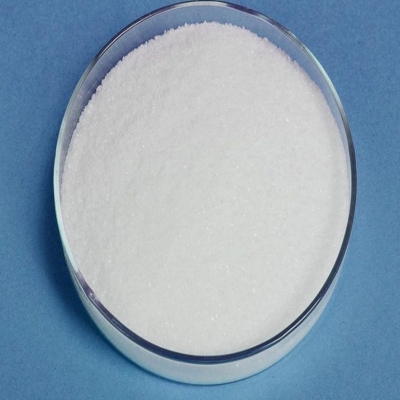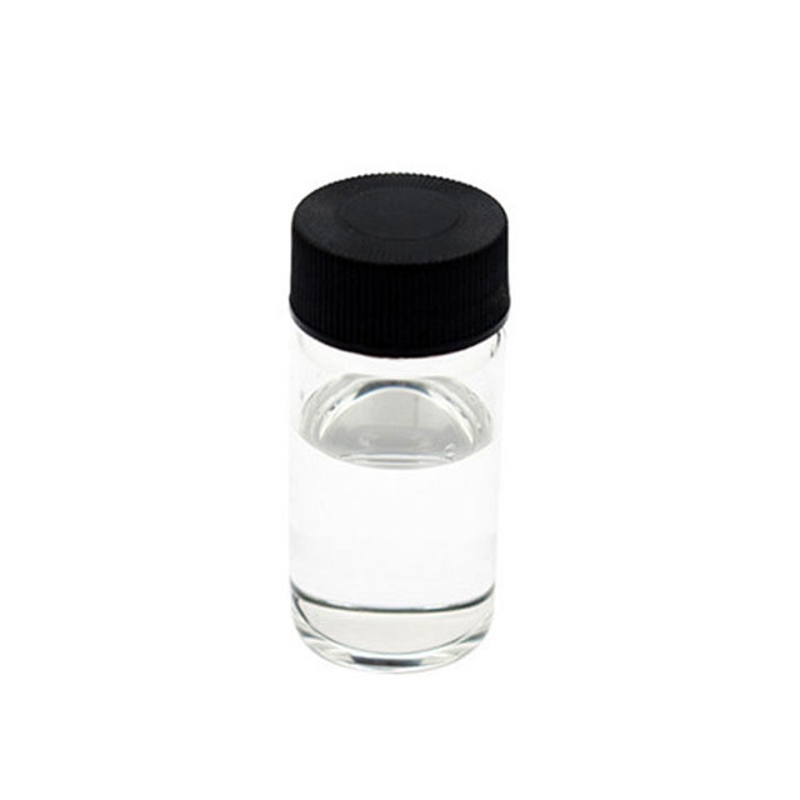-
Categories
-
Pharmaceutical Intermediates
-
Active Pharmaceutical Ingredients
-
Food Additives
- Industrial Coatings
- Agrochemicals
- Dyes and Pigments
- Surfactant
- Flavors and Fragrances
- Chemical Reagents
- Catalyst and Auxiliary
- Natural Products
- Inorganic Chemistry
-
Organic Chemistry
-
Biochemical Engineering
- Analytical Chemistry
- Cosmetic Ingredient
-
Pharmaceutical Intermediates
Promotion
ECHEMI Mall
Wholesale
Weekly Price
Exhibition
News
-
Trade Service
For early non-small cell lung cancer (NSCLC), there is still a risk of recurrence after postoperative assisted chemotherapy.
according to the International Lung Cancer Research Association (IASLC), the postoperative standard postoperative secondary total survival (OS) time for patients with phase II-IIIA NSCLC was 35.0 months to 58.9 months.
recent years, in patients with EGFR mutation NSCLC, the benefits of assisted targeted therapy in reducing recurrence have been supported by several important studies, but total survival data are very limited.
ADJUVANT-CTONG1104 study is the first Phase 3 study to compare the effects of complementary targeted therapy and standard assisted chemotherapy on total survival in patients with EGFR mutation NSCLC.
, the final total survival results of the study were published in the American Society of Clinical Oncology (ASCO) journal Journal of Clinical Oncology.
, Guangdong Lung Cancer Research Institute and Guangdong Provincial People's Hospital, is the author of the communication. The latest data from
show that early EGFR mutation NSCLC patients received gyfynagotic assisted therapy to reduce the risk of recurrence death by 44%, although this advantage ultimately failed to translate into significant total lifetime differences, but the total survival of patients with gyfetinib-assisted therapy was 75.5 months, the team noted in the paper, "compared to historical data, this is one of the longest total survival periods observed in this group."
Wu Yilong, a professor at the University of China, also lamented on social media that the nine-year study was a "co-creation of a record" by 27 hospitals across China.
Screenshot Source: Journal of Clinical Oncology From September 2011 to April 2014, the ADJUVANT-CTONG1104 study included 222 surgically removed phase II-IIIA (N1-N2) EGFR mutation NSCLC patients in 27 clinical centers in China.
patients were randomly grouped at 1:1 and given gyfeitinib once a day for 24 months, or received standard complementary treatment (Changchun Ruibin and Shunplatin, VP) for 3 months (1 cycle every 21 days for a total of 4 cycles).
total lifetime results The final mid-level follow-up time for this update was 80.0 months, with 46.8% (52/111) and 43.2% (48/111) deaths in the gifentinib and standard chemotherapy groups, respectively.
the medium total survival of the two groups of patients was 75.5 months and 62.8 months, respectively, and the five-year total survival rate of the two groups was 53.2% and 51.2%, respectively. There was no significant difference in the total survival of patients in the
gyfeitinib group (blue) and the standard chemotherapy group (red) (Photo source: Source: References) And no significant differences in total survival were observed in subgroup analysis of patients of different ages, genders, lymph nodes and EGFR mutation types.
treatment and survival outcomes in patients with disease progression, 68.4% (52/76) and 73.6% (50/68) of patients in the ginistinist and chemotherapy groups, respectively Follow-up treatment was received, with 36.8 per cent (28/76) and 51.5 per cent (35/68) receiving targeted treatment, including single-drug or combination chemotherapy or topical therapy, respectively.
follow-up treatment in patients with disease progression in the Gynaethione group (left) and the standard chemotherapy group (right).
as a targeted drug, orange as another treatment, purple as no follow-up treatment.
(Photo Source: Resources) If targeted drugs are still available after progress, the total lifetime benefits are greatest.
Of all patients who progressed: patients who received follow-up targeted treatment had a total survival of 76.2 months, patients receiving other treatment had a total survival of 39.3 months, and patients who did not receive follow-up treatment had a total survival of only 23.4 months.
, targeted treatment reduced the risk of death by 77% compared to no follow-up treatment.
trend is similar, regardless of whether the assisted treatment phase receives gyfetinib or standard chemotherapy.
patients with disease progression, the total survival of different follow-up treatment groups.
A: Gyfytinib →EGFR-TKIs; B: Gyfetinib→ Other treatments; C: Gyfetinib → No treatment; D: Standard Chemotherapy →EGFR-TKIs; E: Standard Chemotherapy→ Other Treatments; F: Standard Chemotherapy → No Treatment.
total remission rate (ORR) for patients in the Giftainib group who progressed and then received EGFR-TKIs was 46.4 per cent and the disease stabilization rate was 35.7 per cent.
in the standard assisted chemotherapy group, the total remission rate of EGFR-TKIs was 22.9% and the disease stabilization rate was 42.9%.
The latest mesopathic survival (DFS) in the latest disease-free survival group and the standard chemotherapy group were updated with disease-free survival data, which were 30.8 months and 19.8 months, respectively, and the risk of recurrence or death was significantly reduced by 44%.
2017 data, the risk of this indicator was reduced by 40%. In addition, the disease-free survival rates of patients in the
gyfeitinib group (blue) and the standard chemotherapy group (red) (photo source: Reference: Reference 1) were 39.6% and 32.5%, respectively, and the five-year disease-free survival rate was 22.6% and 23.2%, respectively.
on the impact of clinical practice, the team first noted in the discussion section that these results emphasize the importance of targeted therapy as an early NSCLC-assisted treatment.
In this trial, the total five-year survival rates of N1 and N2 patients treated with Gyfyrinib were 61.4% and 49.3%, respectively, higher than the IASLC statistics (50% and 38%), although the EGFR mutation status of patients in the IASLC database is not clear, which also reflects the lack of real-world data for postoperative assisted treatment in patients with EGFR mutation II-III NSCLC.
the advantage of reducing the risk of recurrence does not translate into total survival benefits, an important potential reason is that follow-up treatment after recurrence can also affect total survival, making it difficult for complementary therapy to statistically reflect the total survival effect.
this also supports DFS as an indicator to assess the effectiveness of complementary treatments.
another potential explanation is that more patients in the standard chemotherapy group (73.6% vs 68.4%) received follow-up treatment in patients who experienced recurrence, and more patients in the standard chemotherapy group (51.5% vs 36.8%) received EGFR-TKI treatment after recurrence.
, the mitigation rate data suggest that patients with EGFR mutations are still sensitive to EGFR-TKIs after recurrence, which is an important reason for the prolonged total lifetime of both groups.
, patients receiving more EGFR-TKI follow-up treatment had a longer total survival.
these results suggest that for patients with EGFR Mutation PHASE II-IIIA (N1-N2) NSCLC surgery, assisted targeted treatment followed by follow-up targeted therapy may lead to longer total lifetimes and may be a better sequential treatment model.
study, the main reason many patients did not receive targeted treatment after relapse was drug access. The
team also noted that, combined with studies related to erlotinib and osetrini, there is still room for optimization of the best course of early NSCLC targeted-assisted therapy, and there is no definitive answer as to whether chemotherapy needs to be retained, although available data support the option of EGFR-TKI-assisted therapy without prior assisted chemotherapy.
summary, the team noted that gyfetinib-assisted therapy is an important postoperative treatment option for patients with EGFR Mutation II-IIIA (N1-N2) NSCLC, which significantly reduces the risk of relapse death.
recently, oxytinib has become the first FDA-approved targeted drug for specific EGFR mutation NSCLC-assisted treatments.
, the final survival results of Oghidini-assisted therapy studies may provide further insights.
: ( 1 ) Zhong Wen-Zhao, et al., (2020). Gefitinib Versus Vinorelbine Plus Cisplatin as Adjuvant Treatment for Stage II-IIIA (N1-N2) EGFR-Mutant NSCLC: Final Overall Survival Analysis of CTONG1104 Phase III Trial. Journal of Clinical Oncology, DOI: 10.1200/JCO.20.01820[2] FDA Approves First Adjuvant Therapy for Most Common Type of Lung Cancer. Retrieved December 21, 2020, from。







